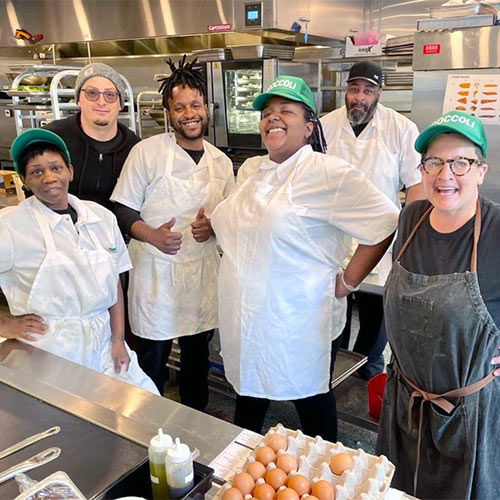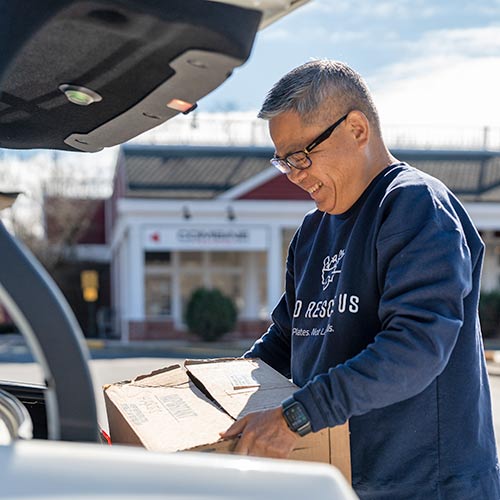Food as Medicine: Digestible Bites (with a side of Local Bites) – October 2023
The shorter version
- Check out the excellent Netflix docu-series, “Live to 100: Secrets of the Blue Zones,” where NatGeo reporter Dan Buettner, travels around the world to discover five unique communities where people live extraordinarily long and vibrant lives. Spoiler: FOOD IS MEDICINE!
- New presidential advisory puts food at the heart of U.S. health policy.
- Mexican consumers are beginning to see warning labels on packages of food and drink warning excessive in sugars, sodium, saturated fats, trans-fats and/or calories in products.
- Local Bites: We talk to Danbury Farmers’ Market Community Collaborative’s Peggy Zamore. Peggy explains how she became the collaborative’s Director/Nutritionist, how they walk the walk not just talk the talk, gives advice on what to do when summer farmers’ markets close for the season, and more!
The longer version
Secrets of Blue Zones
In the excellent Netflix docu-series, “Live to 100: Secrets of the Blue Zones,” host, author, and NatGeo reporter Dan Buettner, travels around the world to discover five unique communities where people live extraordinarily long and vibrant lives. Spoiler: FOOD IS MEDICINE!
In addition to an active lifestyle and strong community ties, local, fresh food is a major component of longevity. After visiting each locale, Buettner analyzes the data and determines what habits all these communities share. Warning: I can’t stop eating sweet potatoes after watching this!
And, an added benefit (beyond learning how to live to 100!) is that Marion Nestle, our favorite public health expert/food politics queen, makes an appearance in the documentary… and also in Mexico (Marion is clearly following the Blue Zone formula because at 87 she’s everywhere! Read below).
Front-of-package labeling advances in the Americas
Mexican consumers are now seeing warning labels on packages of food and drink products sold at supermarkets and grocery stores. The labels – black octagons with white lettering on the main face of the package– indicate whether the product is excessive in sugars, sodium, saturated fats, trans-fats and/or calories. This is considered the most advanced and comprehensive regulation worldwide.
See labels:
Translation: High in Calories, High in Sugars, High in Sodium, High in Saturated Fats
On a recent trip to Mexico, the amazing Nestle reported, “Mexico has high obesity prevalence, especially in children (~35%). Public health officials hope the warning labels will alert the public to avoid overconsuming processed foods. Despite the fact that she found, “Food companies are doing everything they can to hide the warning labels. They make sure the warnings are hidden when they stock the packages on shelves,” she goes on to report, “The warnings must be working. Food companies are evading, undermining, and fighting the new regulations. Several lawsuits are in progress. I will be following their progress with great interest.”
At 87 years old, Nestle is fighting the good fight as strong as ever. Go, Marion, go!
New presidential advisory puts food at the heart of U.S. health policy
The American Heart Association recommends approaches to build a robust evidence base for increasing adoption of clinical Food Is Medicine programs in the U.S.
“This presidential advisory offers an overview of the state of the field of Food Is Medicine and a road map for a new research initiative that strategically approaches the outstanding questions in the field while prioritizing a human-centered design approach to achieve high rates of patient engagement and sustained behavior change. This will ideally happen in the context of broader efforts to use a health equity–centered approach to enhance the ways in which our food system and related policies support improvements in health.”
An estimated 90% of the $4.3 trillion annual cost of healthcare in the U.S. is spent on medical care for chronic diseases. Unhealthy food intake is a major risk factor for many of these diseases. Healthy food is not accessible or affordable for many people in the U.S., making it difficult to apply clinical food-based interventions that treat and prevent disease. Recent research demonstrates that health care systems may be able to help patients access healthy foods, resulting in improved health, reduced need for health care and better cost-effectiveness.
Local Bites
This month we connected with Danbury Farmers’ Market Community Collaborative’s Peggy Zamore. Peggy has many impressive initials after her name (RD, MPH, CD-N) and is the dedicated Director/Nutritionist at the collaborative.
Food Rescue (FR): What is your professional background?
Peggy Zamore (PZ): I have a Masters in Public Health Nutrition and I’m a registered dietitian so my mission is to get folks, especially those who are financially challenged, to eat a better diet, i.e. much more fresh, local delicious fruits, veggies and other farm products, to either prevent lots of diseases or to manage the ones they already have.
Thus our mission statement (“to provide equitable access to fresh food”) and all the incentive programs to encourage and enable this behavior change 🙂 We walk the walk – not just talk the talk. We provide folks with the resources to eat the way that would be best for them- and for the most part – how they really want to be eating. Affording the food is usually the barrier.
A very important part of why I do what I do is to support local agriculture. It’s a win-win with so many reasons to eat local! Our mission is truly to provide equitable access to fresh local food, grown in a sustainable way as close to organic as possible.
FR: How did you come to Danbury Farmers’ Market?
PZ: I live in the area and was working for Wholesome Wave. I started a small incentive program in 2009. Then, I began fundraising for our own program with the help of CityCenter Danbury – which houses the market.
FR: What is your favorite part about the market?
PZ: Providing the incentives, hearing such positive feedback re how important it is to them – and seeing folks leave with bags of fresh produce 🙂
FR: What do you customers’ do once the summer bounty is over?
PZ: Hopefully, continue to buy and eat fresh produce – even if it is imported.
More info about the Danbury Farmers’ Market Community Collaborative
Every Saturday, from June through October, the Danbury Farmers’ Market Community Collaborative (DFMCC) enables everyone to share in the excitement and benefits of fresh local fruits, vegetables and specialty food items.
For those with limited resources, providing additional cash (purchasing power) is the best incentive to increase buying and then eating of local fresh fruits and vegetables. Using a market coin system, DFMCC enables Supplemental Nutrition Assistance Program (SNAP, formerly know as Food Stamps) recipients to use their benefits at the market and matches an unlimited amount per market to buy nutritious food. DFMCC also matches Senior and Women, Infant & Children’s program (WIC) Farmers’ Market Nutrition Program Cards (FMNP).
For those not receiving government food assistance, Fruit and Veggie Health Certificates are available through some community organizations including a community health center and Association of Religious Communities, as part of some of their summer health programs.
Vets will be provided $10 in market produce coins at the market. ID is required
Thanks,
Food Rescue US – Fairfield County Food as Medicine Liaison
If you enjoyed this post, you might also like last month’s Food As Medicine post.




